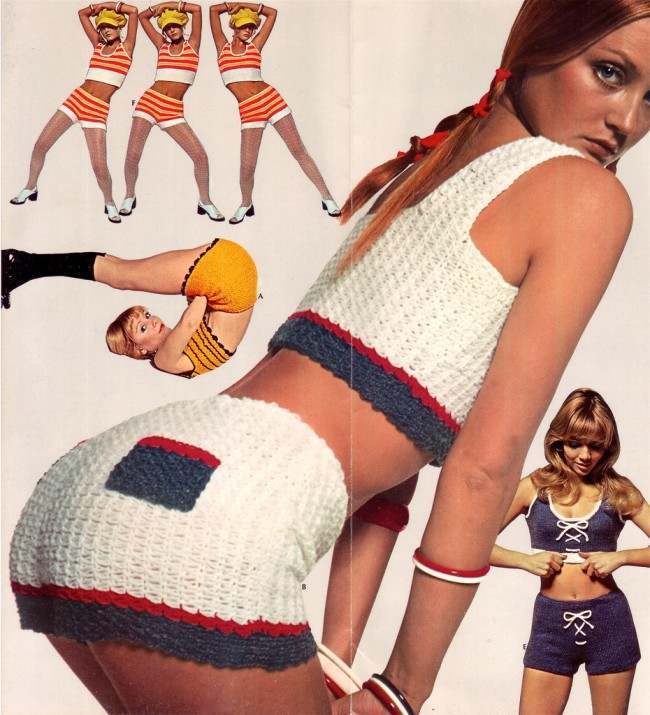
The ART of crafting your own clothes goes back ages, and was extremely common for most of the 20th century. Most women had been skilled in the Dark Arts of Needlework since they could walk. So, sewing a dress or crocheting a shawl was no big deal – a typical day’s work.
Then came the 1970s and things got weird. We all know the tastes of the decade were… well, (how do I put this delicately?)…. intriguing. Add to the mix the fact that millions upon millions of Baby Boomers were all in their sexual prime, and you get needlework creations that are not only “intriguing” but also sexed up a hundred notches.
Thus, where once needlecraft booklets looked like this…
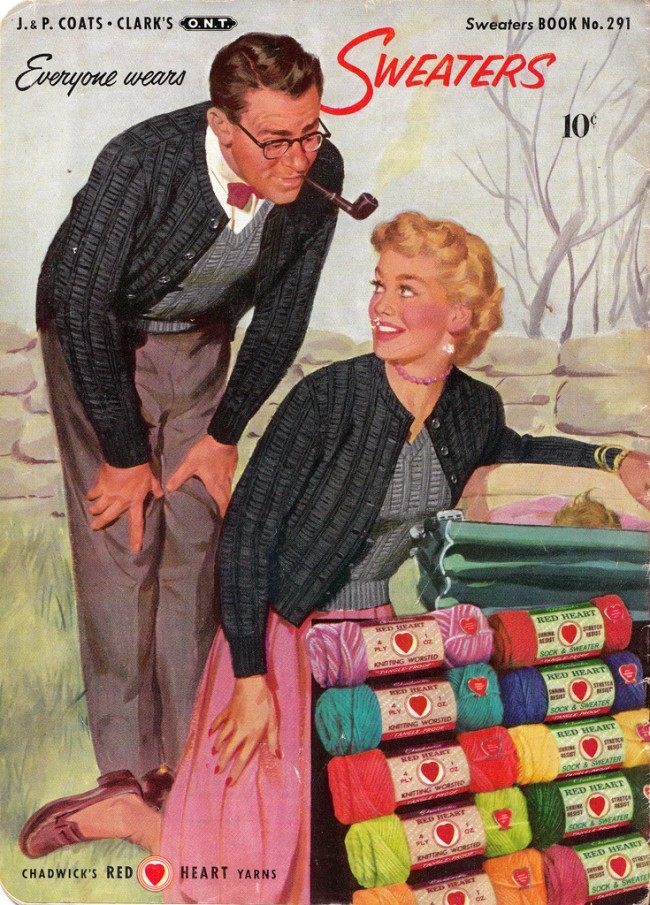
Now, in just a matter of a decade looked like this…
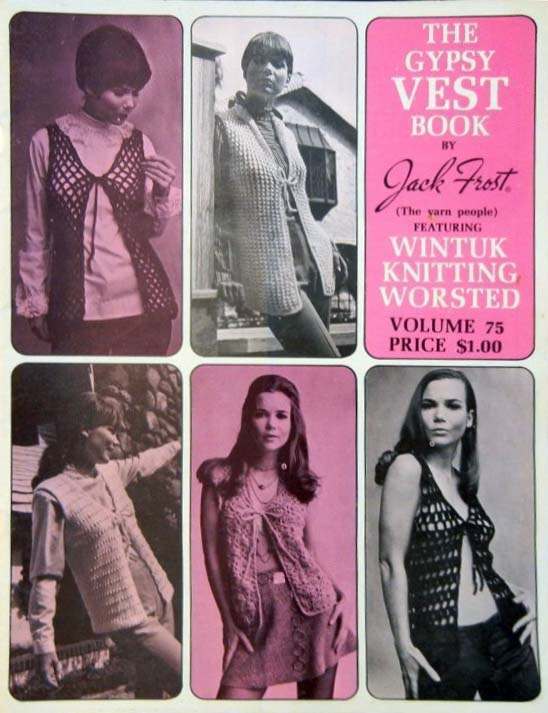
True, the 1950s booklet was about sweaters, and this one is about vests. However, the differences transcend sleeves.
These girls are wearing their crochet vests with nothing underneath. This isn’t your grandmother’s sewing booklet… welcome to the 1970s.
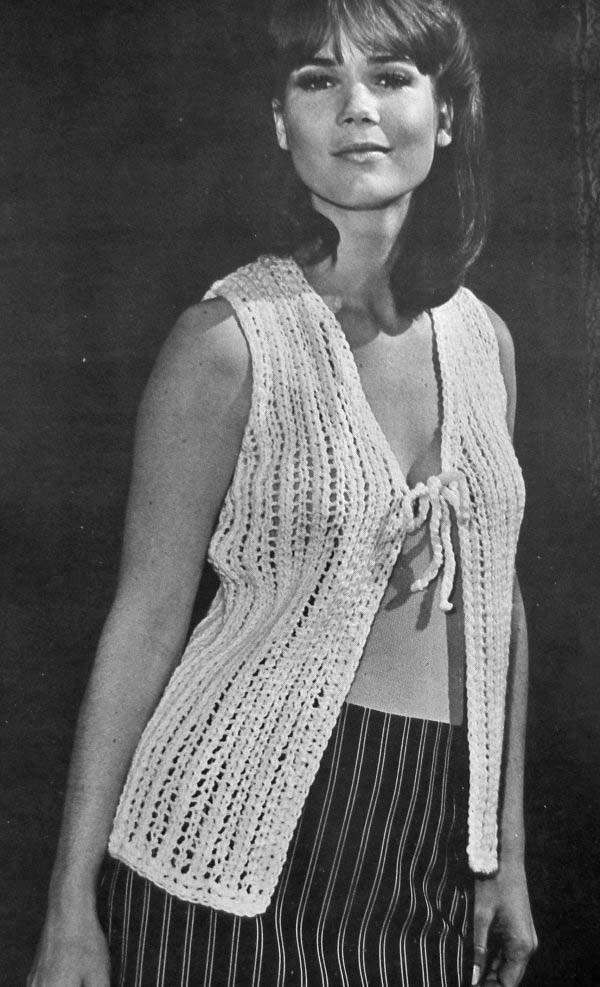
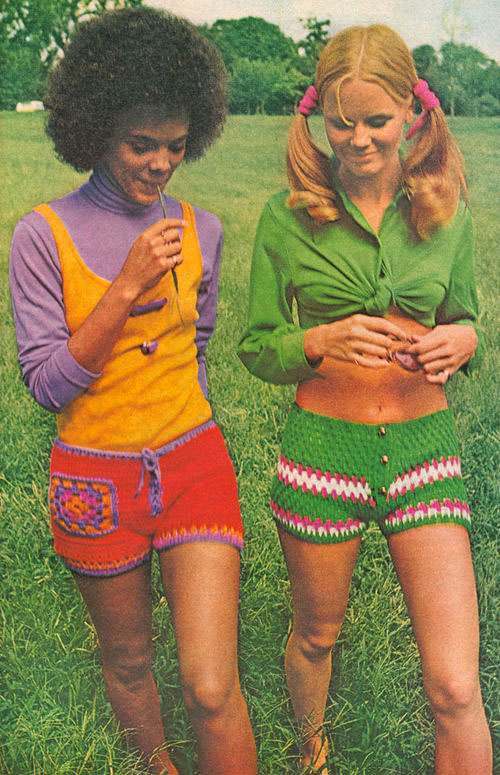
Admittedly, these getups are a bit odd… yet, somehow magically hot at the same time. Only in the 1970s could they make yarn sexy and take crochet to its absolute grooviest limit. The color combinations and styles are perhaps only appreciated via recreational drug use; however, with an open mind, we can perhaps enter this world briefly, and appreciate its tacky grandeur.
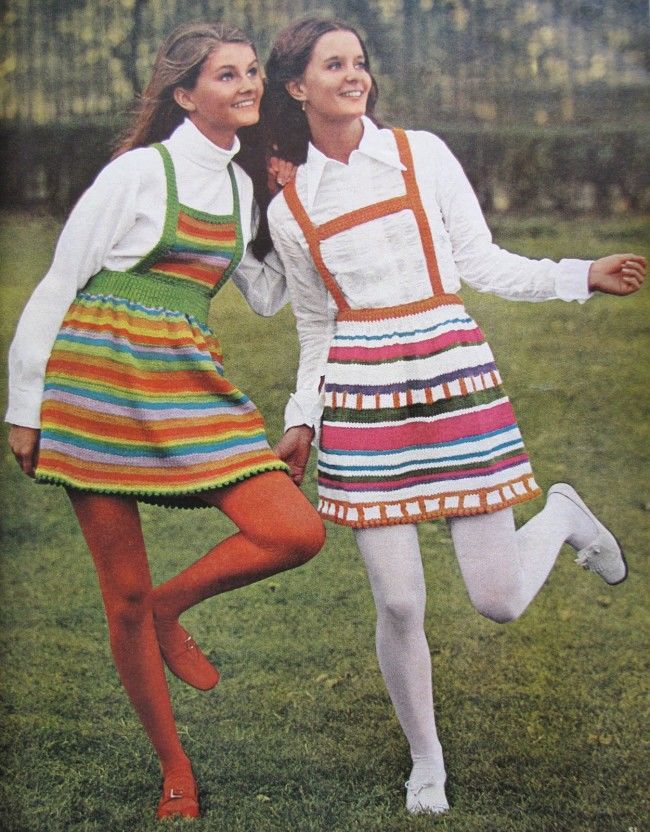
Now that you have agreed to enter this strange world, I should warn you: these images look less like needlecraft illustrations than they do Eastern European pornos.
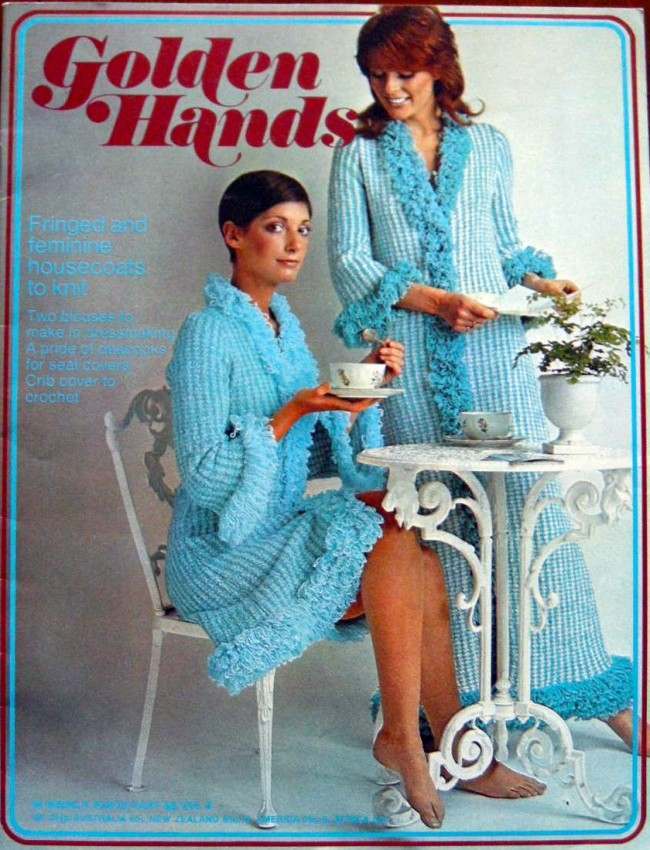
I mean, even the covers of the knitting pamphlets look like adult reading. You can’t tell me “Golden Hands” doesn’t look like something that should be sold behind the counter in plain brown wrapper.
Another example of a knitting pamphlet looking a lot like a skin rag…
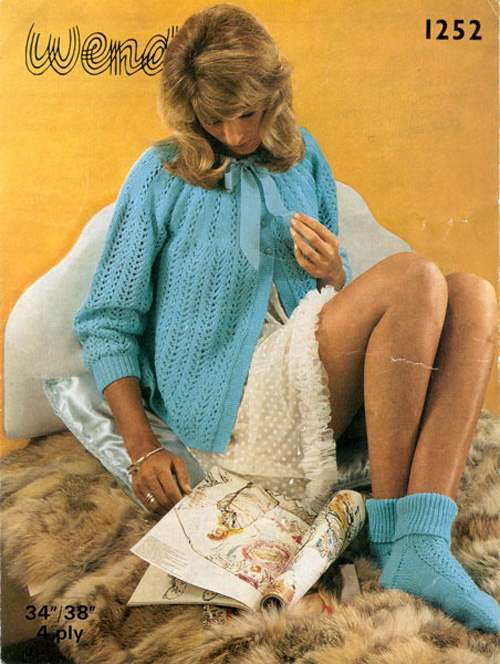
And another…
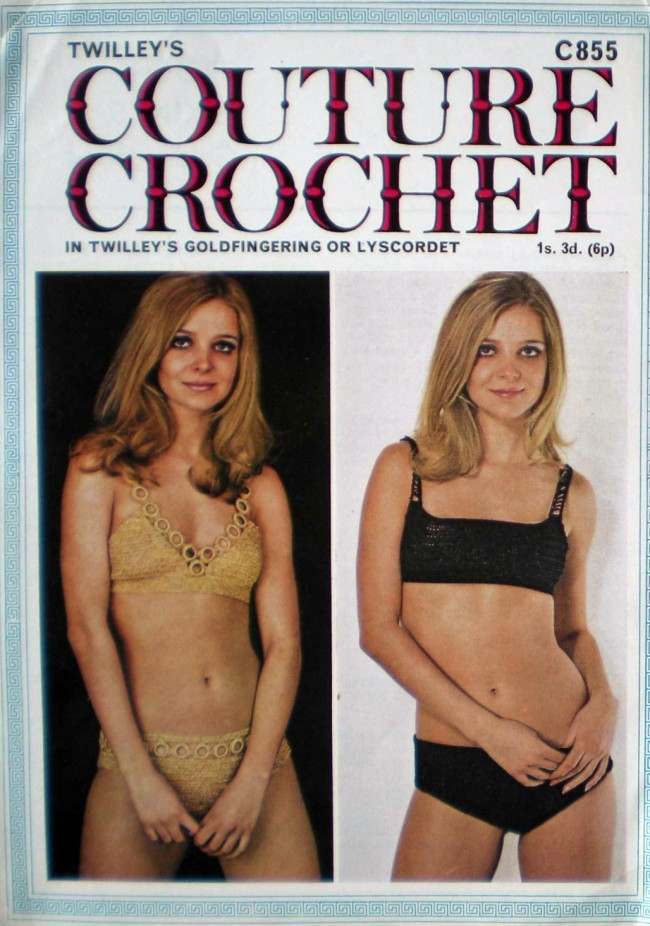
All it needs is some wood paneling in the background, and it looks like a seedy porno mag. Of course, this was the 1970s – nearly everything was a hair’s breadth away from being a porno.
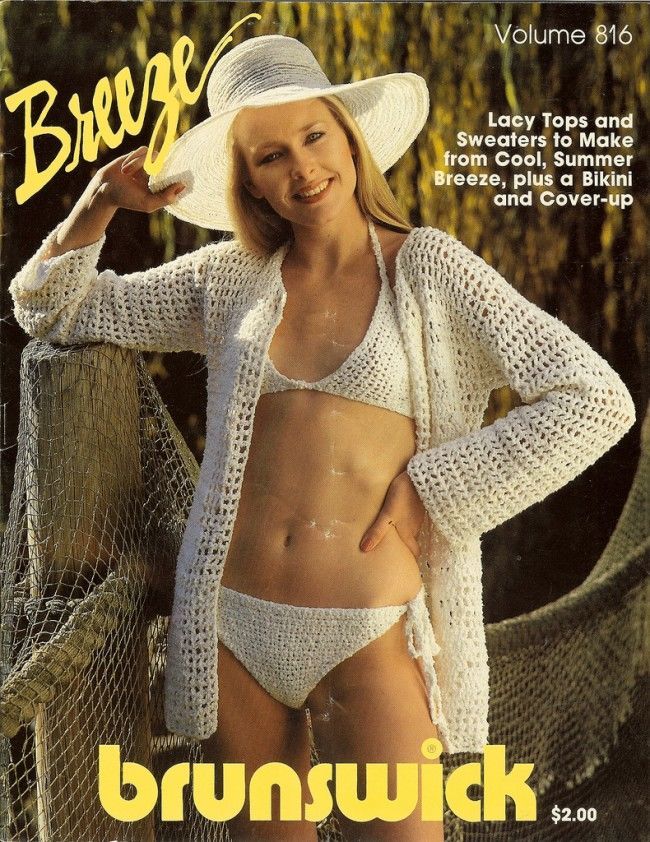
I’ve never understood how bathing suits made of yarn would work. You would think the instant they became wet things would droop, sag and fall off. Yet, they existed and tons of needlework magazines provided instructions to make them.
More proof…
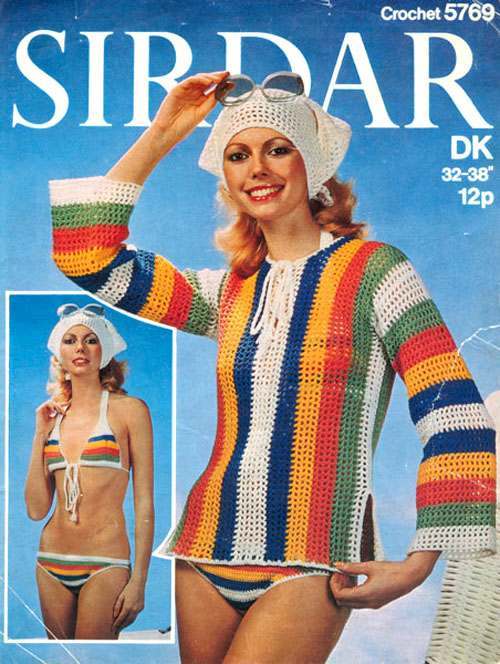
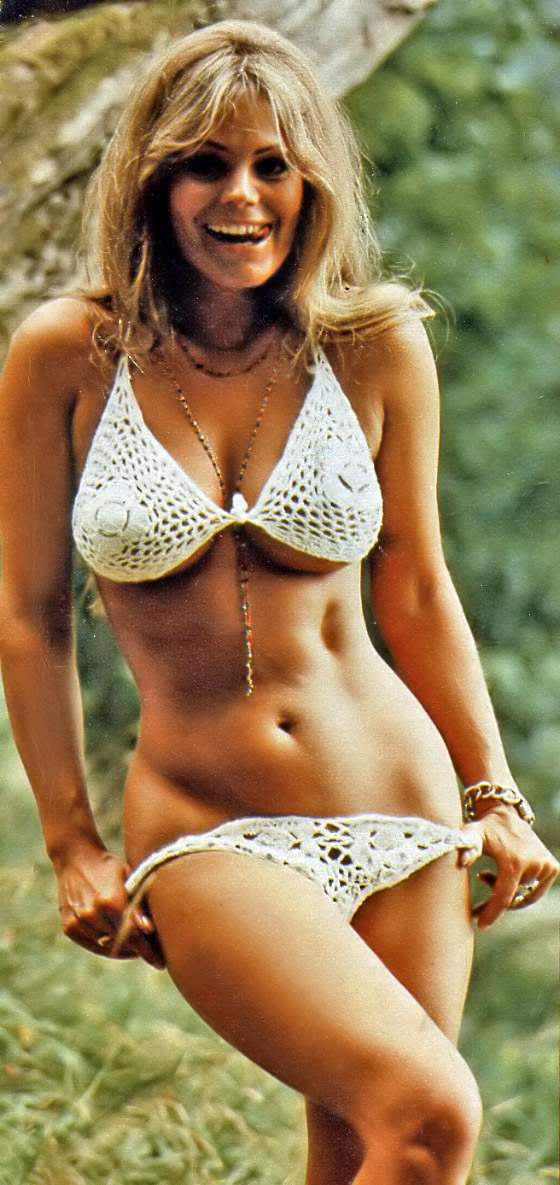


Great shades of Elvis! Crochet, by its very nature, contains revealing gaps – even when it’s not wet. So, when worn without clothing underneath, things could get revealing (to put it mildly). The mind reels at the thought of what will happen when the girl in purple enters the surf.
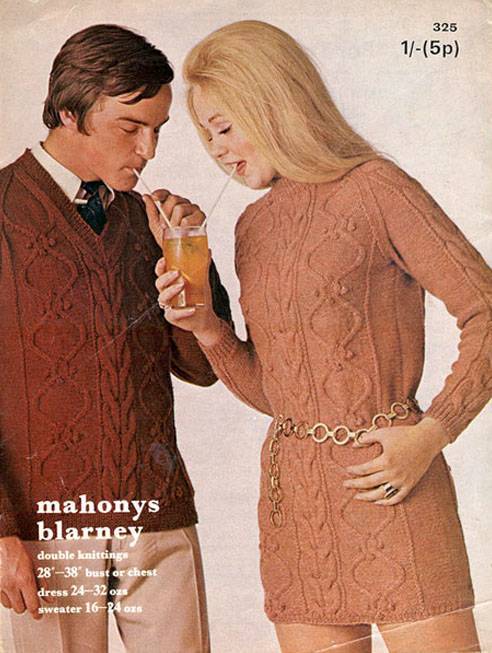
I’m going to refrain from pointing out the obvious sexual undertones. Instead, I’ll mention, in the interest of accuracy, that a couple of these images do come from the late Sixties. Indeed, the flavor of ’69 wasn’t a whole lot different than the following year.

There’s something to be said for clothes that you make yourself versus clothes purchased on the cheap from a sweatshop in the Philippines. In this regard, I have respect for the DIY mentality of the 1970s, born from the anti-materialist mojo of the hippie movement.

JESUS H. CHRIST ON A RITZ CRACKER!! Mama’s wearing a pair of see through pants!
Not to mention that dad’s got on a crochet suit jacket. Damn. The things they did with yarn in the 70s gives me the shivers. Let’s face it – drugs and needlework do not always mix.
There are a surprising number of these see-through numbers in needlework/crochet manuals of the 70s. Obviously, they weren’t meant to be your only covering (garments were presumably worn underneath). However, judging by some of the photographs, the yarn bedecked beauties of the 70s went commando.
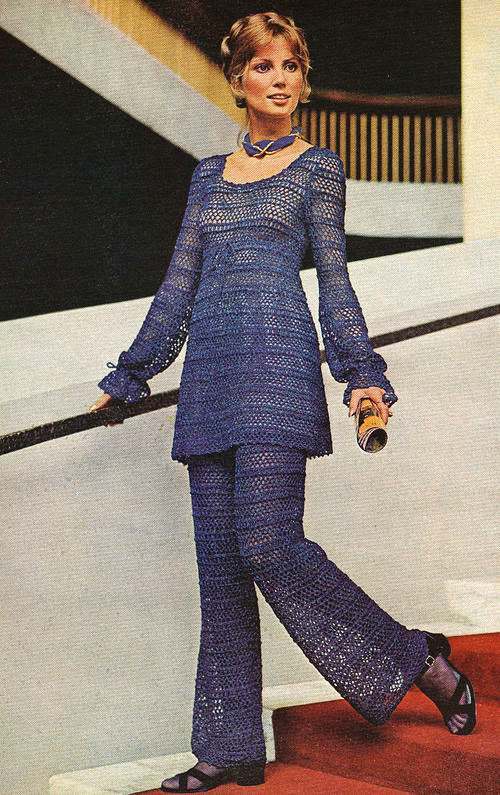
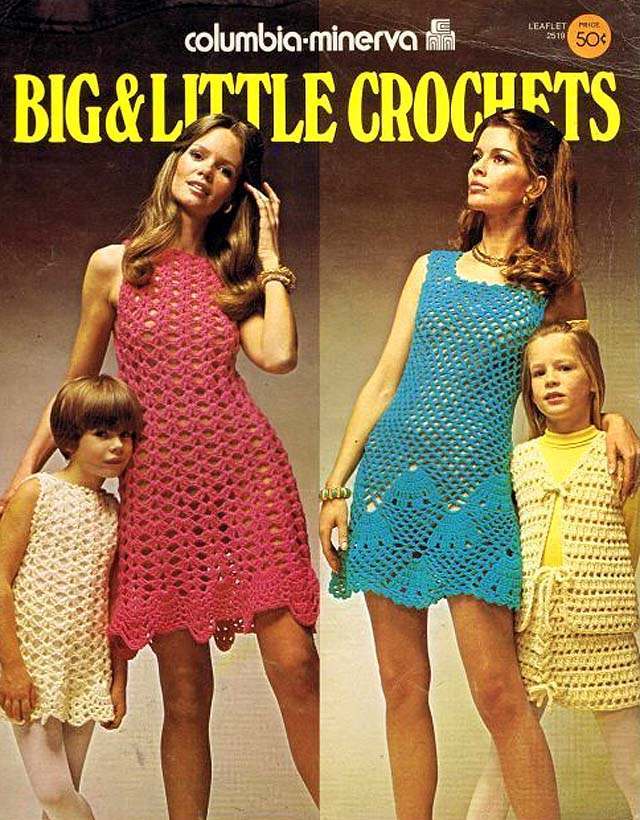
Ultimately, it’s crochet that wins the prize for sexiest needlework creations. The revealing gaps apparently weren’t a worry for the uninhibited gals of decades past. These DIY patterns might get you arrested for public indecency today, but were no big concern the ladies of the 70s. And for this, they deserve our deepest respect.
Would you like to support Flashbak?
Please consider making a donation to our site. We don't want to rely on ads to bring you the best of visual culture. You can also support us by signing up to our Mailing List. And you can also follow us on Facebook, Instagram and Twitter. For great art and culture delivered to your door, visit our shop.

